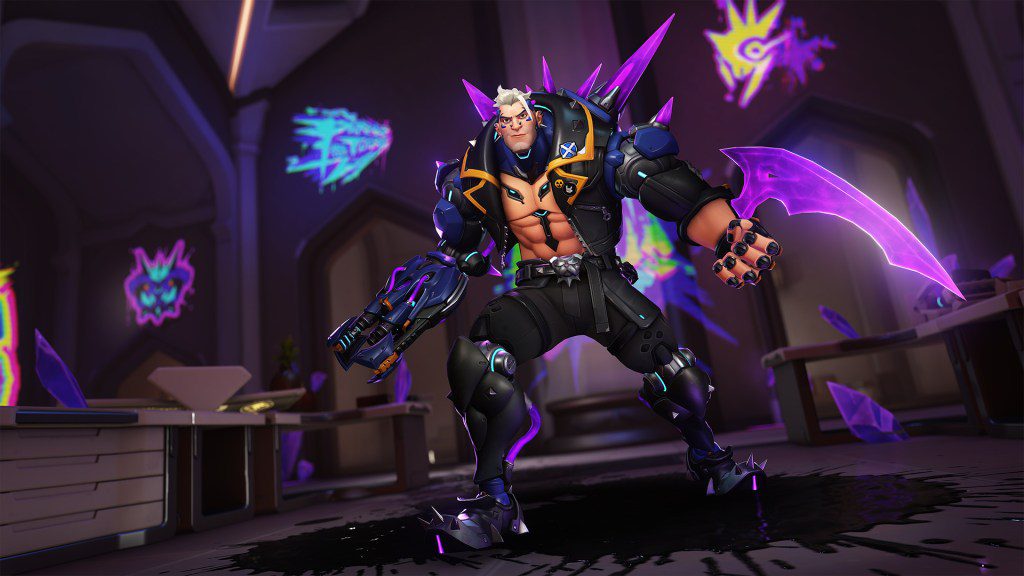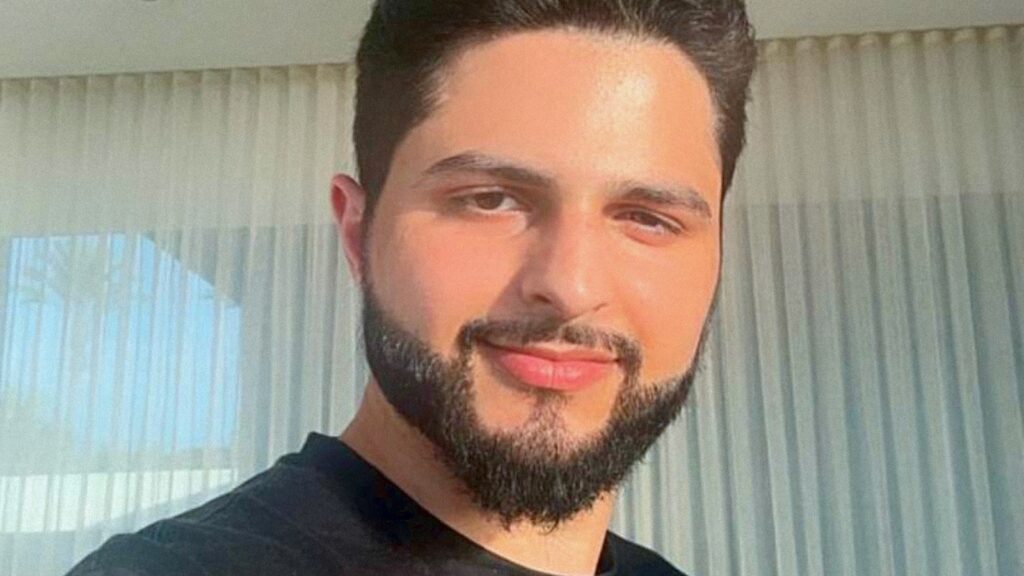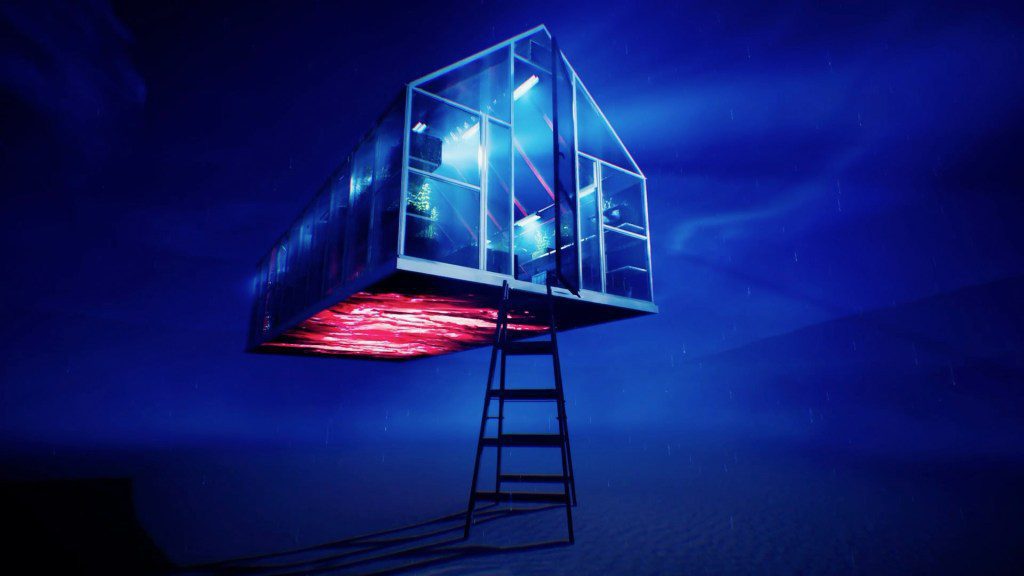How ‘Overwatch’ Is Pioneering Disabled Representation in Gaming
Since launching in 2016, Overwatch has led a charge for the hero shooter as a genre. Several imitators have cropped up over the years, all attempting to claim their stake, but some exceptions aside, almost all of them have failed. A huge part of its success stems from its consistent updates that bring new characters to the fold every few months in the form of seasonal updates (the next one being Freja, who arrives with Season 16 on April 22).
The franchise has been praised for the way it handles character design and diversity — featuring heroes of all ethnicities and physical builds — while maintaining a relative balance in power level regardless of their form.
One of the strongest aspects of Overwatch’s roster, however, is in its depiction of disabled characters, leaning into what the game’s developers refer to as “optimistic futurism” to show how everyone, regardless of physical impairment or enhancement, can thrive in this sci-fi world.
In November of 2024, a character named Hazard was added to the game. As part of his origin story, Hazard is disabled after losing an arm and both legs in an accident, leading to the use of high-tech prosthetic limbs. It was extremely important for Blizzard to make sure that this was represented both aesthetically in his character design, and directly in the way his gameplay works.
Although he followed other characters with cybernetic prosthetics, like Sojourn (added in 2022) and a number of the game’s earlier heroes, the introduction of Hazard was seen internally as a turning point in how the developers would approach writing characters with disabilities moving forward, leaning deeper into the personal experiences and perspectives of each character rather than simply using their enhancements as visual dressing.
Rolling Stone recently spoke to senior narrative designer Jude Stacey and disability consultant Angel Giuffria about the way that story and gameplay are balanced, the consideration behind celebrating individualism without leaning into tokenism, and how disability consultants help developers throughout the entire process.
Owning the narrative
When designing new characters for Overwatch, the team says that it’s essential to bring in people who can help the developers accurately represent lived experiences, allowing for a lot more diversity in thought in the process. It’s difficult for a limited staff to embody every possible perspective, which is where bringing in a diversity consultant comes in.
“We talk about the idea of our own stories a lot,” Stacey says. “The idea of who can tell what story, of who has the experience — the lived experience — to accurately reflect and describe what it’s like to live a certain life, and simply by virtue of the number of people that can exist on a team versus the number of people in the world, we can’t encapsulate all of that on our staff.”
Introduced in Nov. 2024, Hazard is a recent hero whose prosthetic limbs are a part of his design and gameplay.
Blizzard Entertainment
While the team for Overwatch 2 isn’t small by any stretch of the imagination (around 400 people were working on the game in early 2024), a series of layoffs at the end of the year cut an unspecified number of team members, leaving the game’s developers in a tough position. With a desire to continue pushing forward with new types of representation despite certain cultural blind spots, bringing in a disability consultant became critical.
“It’s great to bring in people like Angel who can help guide the conversation and make sure that we are accurately representing people that have lived experiences different than our own,” Stacey says.
But the act of designing new characters is a collective effort. As Stacey explains, the team needed to reflect on their own experiences in order to bring pathos to the character, while still crafting a story that leans futuristic in a uniquely Overwatch way. “For Hazard, personally, I reflected on my experience as somebody with chronic pain,” Stacey says, “and when I was working on the rest of his story and thinking about his limb differences, [that] is where Angel came in.”
Giuffria, an actress and congenital amputee who has spent years consulting on disability and inclusivity in the entertainment industry, believes that games have the best representation in multimedia when it comes to disabilities and limb differences — but it’s still vital for developers to talk to people who have real-life experience. “A lot of the best representation for me as somebody with a prosthesis is in games,” Giuffria says. “I enjoy seeing the world of what could exist, and then I take whatever is in that and try to bring it back in, like with Hazard.”
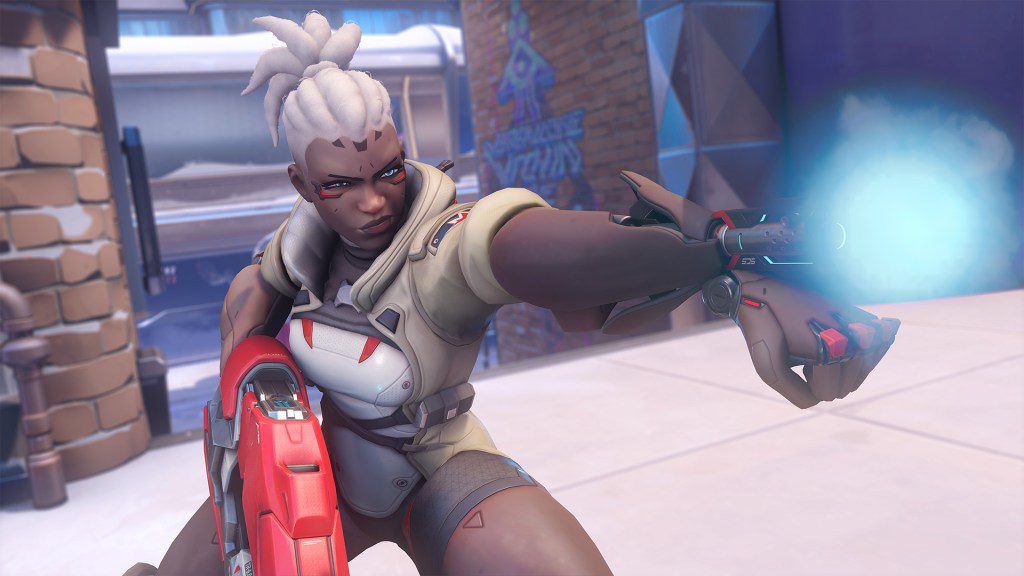
Sojourn (introduced in 2022) is another playable character whose prothesis factor into her abilities.
Blizzard Entertainment
Since Overwatch exists in a utopian future, it’s also important to make sure that the type of prosthetics used are representative of the way that technology had developed in-universe, which is something that Giuffria insisted on fleshing out in the process of consulting on Hazard. “Obviously this type of technology doesn’t currently exist,” she says, “but I will bring up things like, ‘How long was he in the hospital?’ ‘What type of devices are we looking at at this point in time?’ So it’s just finding those little things, asking those questions, and making the team think about it.”
The making of Hazard
Hazard is a character whose story is relatable, centering not just on what he’s lost but what he’s willing to gain. At the tender age of four, his mother died, leaving him in the care of an absent father. It was here that Hazard learned how to fend for himself, and it was during that period that he learned that one of the few ways to pay for university was to enlist in the military. This decision, however, would lead to Hazard becoming a triple amputee — with a dropship crashing into his flat during a battle between rival forces, Overwatch and Talon, killing his father and leaving Hazard himself trapped for two days.
His government offering him very little help, Hazard sought out a faction known as the Phreaks who — as counter-culture anarchists who also had prosthetics — hated the government as much as he did, and they provided him with his current prosthesis. In return, Hazard joined their mission, which is making the people in power pay for their negligence.
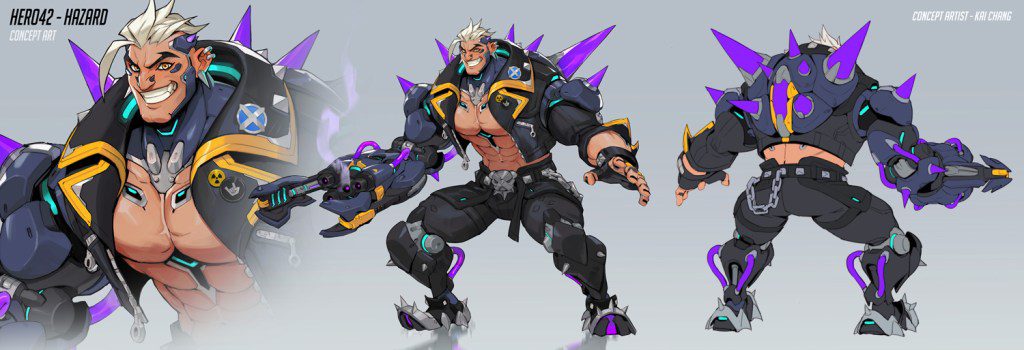
Hazard was designed with the aid of disability consultants to hone the character’s backstory and perspective.
Blizzard Entertainment
In some ways, it’s a familiar story to anyone who’s dealt with subpar medical coverage or a lack of investment from their government; even without the science fiction angle, it could easily be pulled from the headlines. But Overwatch is a world where, despite conflict, everybody is trying to find a better future — and that’s something that Stacey wanted to show with Hazard.
“Hazard is so comfortable in his body, he’s so happy,” Stacey says. “I think the Phreaks are a found family who find each other at the worst points of their lives, and help each other grow. Overwatch is an optimistic future, and that’s something we always strive towards. Obviously, there are darker parts of the story, sometimes just because that’s how you tell a story with conflict. But I think when we tell these stories, we try to emphasize the positive progress being made in the world, and how that changes the lives of our characters.”
It’s not just the game where Blizzard develops their characters, though — there’s also several comic books and novels in which they expand upon the world of Overwatch, and disability representation is important here too. “When I was working on Sojourn for the novel, there were so many different things that we discussed about how her disability affected her in day-to-day life,” Giuffria says.
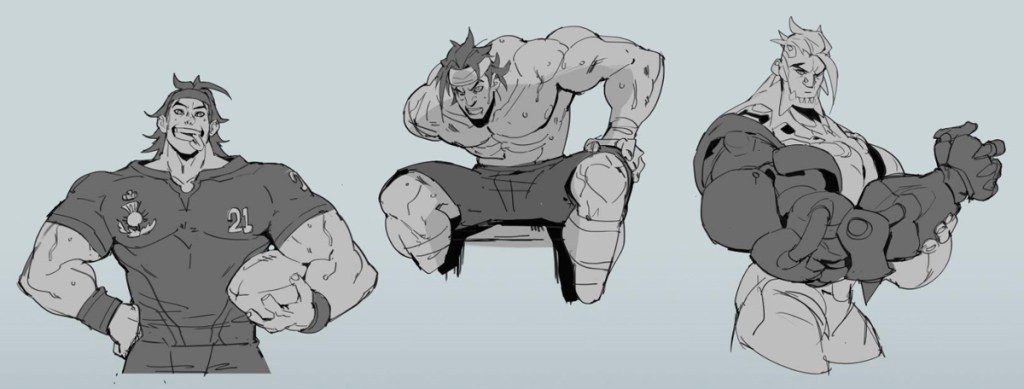
Hazard’s story of a military hopeful whose multiple amputations leave him looking for government non-existent help — something people in reality know all too well.
Blizzard Entertainment
“It is not everything, and I think that’s what is so important about how Overwatch has represented these characters, because it never feels like that this is what we’re doing,” Giuffria notes. “We’re talking about characters who have disabilities, and they exist throughout their day. In a world of the mundane, it’s just part of it, not the whole experience. Having consultants and core members of the team that are familiar with disability experience helps to make sure that this is still a hero, still a character, the disability is just part of their lives.”
Finding meaning in diversity
Overwatch also has something that is thankfully becoming more common in video games: a diverse range of character backgrounds. American, Egyptian, Japanese — people of all ethnicities and nationalities are being represented, and Hazard joins that list as the game’s first Scottish hero. But Blizzard wasn’t dead-set on the character being distinctly Glaswegian unless they could get a voice actor from Glasgow.
“When we were looking for someone to play Hazard, it was a question of, well, right now, Hazard is from Glasgow. If we can’t get an actor from Glasgow, we’re not going to make him be from Glasgow. We’ll change him to be from somewhere else in Scotland,” Stacey says.
“Connor [McCloud, the voice actor for Hazard] just did an excellent job capturing the character and also has the Glaswegian accent. Between localization and Connor’s knowledge, we were able to really create a whole picture of Hazard as a Scottish person, as well as somebody who is differently-abled.”
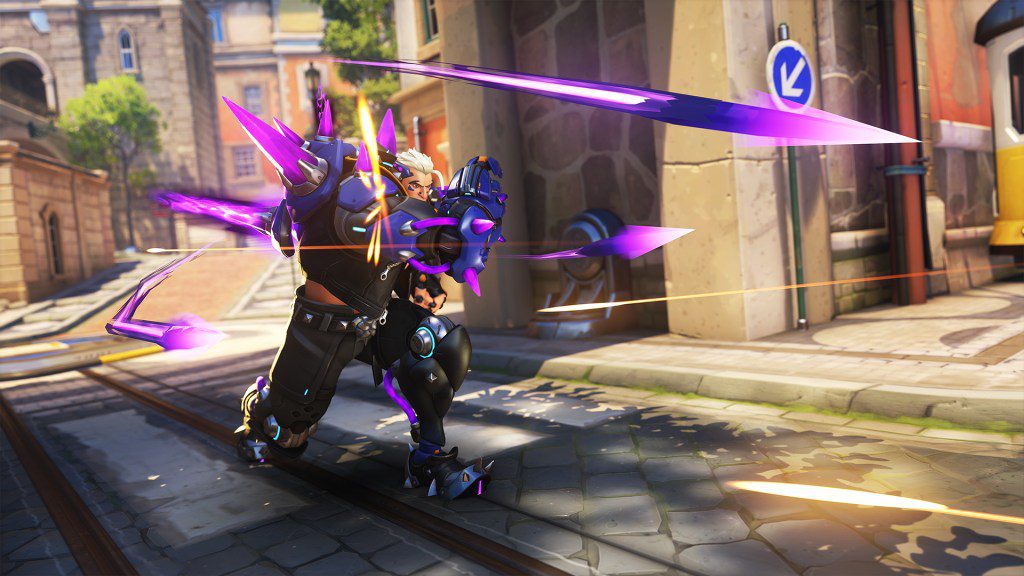
Finding a home with others facing similar challenges, he finds purpose and camaraderie.
Blizzard Entertainment
The marriage between gameplay, story, and character is important, but it’s a delicate balance. Games often fail to equally serve each pillar, or in having them in service of each other — favoring any one aspect can lead to neglecting another. Since its release in 2023, Overwatch 2 has set out with the goal of making sure that each of these elements inform each other: gameplay has to matter to the story, and the story has to change how the character plays. But balancing all of this is a tough task. “I would say it’s a group effort,” Stacey says.
“When we start on a hero, the gameplay is usually the first thing that we work on, and then from there, it’s thinking about whether the gameplay fits our world, what kind of stories we can tell with it,” Stacey explains. “When it came to Hazard, one of the first parts of his gameplay were his spikes. When we were developing his story, we thought about what material the spikes were, which is where the Vanadium came in, and the story we created around it was that it allowed him to have greater control of his body.”
For Blizzard, it’s all about making sure that a character feels good to play — something that’s critical to the success of a hero shooter. If none of the characters speak to a player, then why would they stick around? Overwatch has an incredibly dedicated competitive fanbase who regularly debate about who the best characters are gameplay or story-wise. There are around 39,000 fanfic creations listed on the Overwatch forum Archive of Our Own alone, proving how much the community loves these characters and their personalities. With Hazard and Sojourn, it was all about making sure that as many people as possible feel represented, and that they see a place for themselves in a hopeful future.
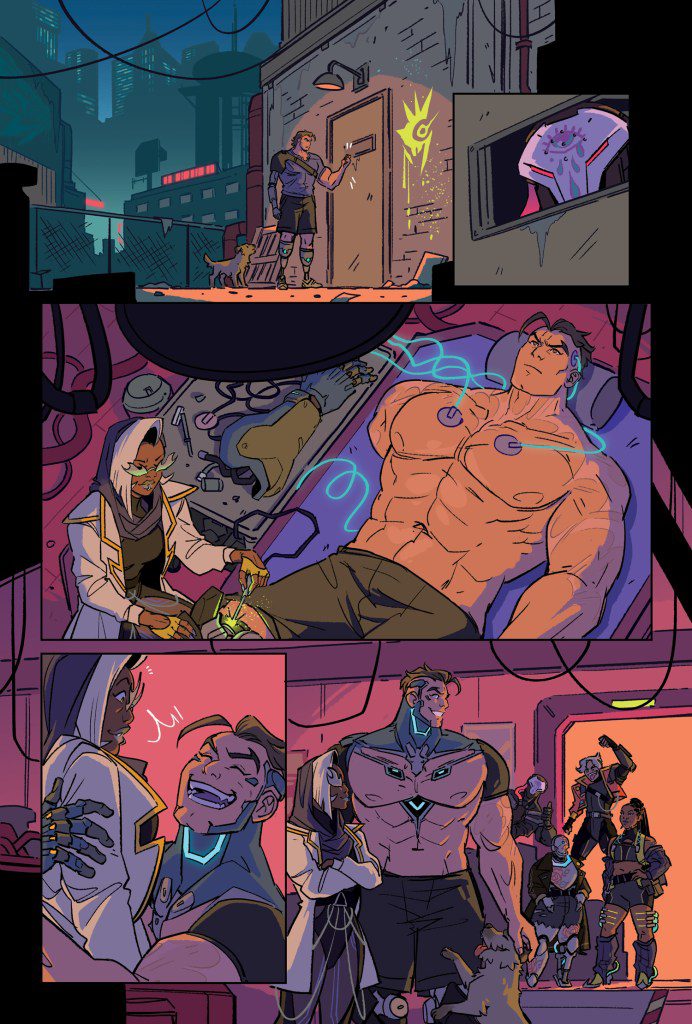
Hazard’s story is told beyond the game in official tie-in comics as well.
Blizzard Entertainment
“Something that’s really important to us is making sure that these characters are relatable to all different kinds of people with different experiences,” says Stacey. “In the comic he gets a tattoo on his cybernetic arm, and the idea there is that it’s as much a part of him as anything else. He wants to customize it, make it his own, and just like anybody else, he can. We wanted to show him being a whole person, not just a token for disability representation.”
Tokenization in disability is fairly common — the problem arises when creators want to cover every facet of life, but either through inexperience or a lack of inspiration, fail to produce a meaningful story or an arc for the character, leading to them becoming ignored as background dressing. Overwatch manages to avoid this misstep by elaborating on each and every character that they introduce to the game, detailing their backstory, making players actually care about these people beyond the way they control or how cool they look.
Hazard, specifically, is a successful character because he reflects a current disillusionment with the state of the world and a desire to see things change — but at his core, he’s a person. His depiction of pain, and overcoming pain to ascend to something more, is based on the experiences real people have. “I want people to understand that, when we create these heroes, we’re creating people, right?” Stacey says. “Character creation is an amazing thing; you can imagine an entire person. But it comes from the people we know and love and care about.”
She adds, “Heroes can come from anywhere.”


